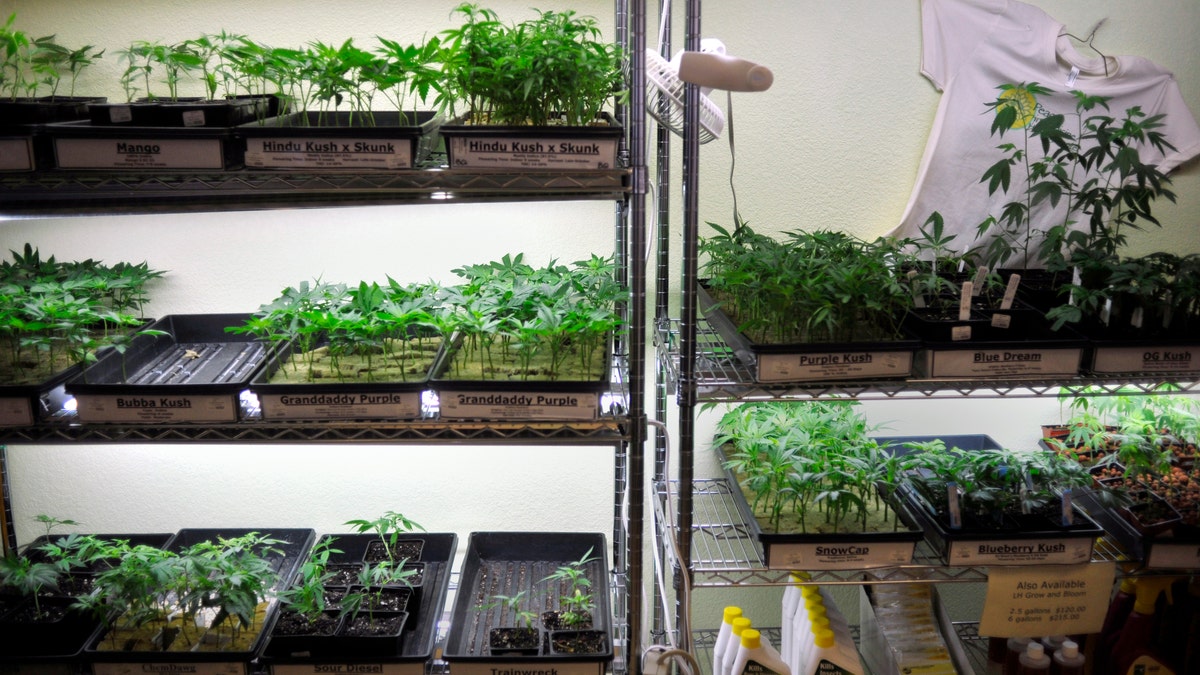
Oct. 29, 2009: This file photo shows trays of marijuana clones and gardening supplies underneath grow lights at the Peace in Medicine dispensary in Sebastopol, Calif. (AP)
In states that have passed medical marijuana laws, pot use among adolescents and young adults has remained steady over the past decade, a new study finds.
In the study, researchers compared the rates of teens and young adults in these states who reported using marijuana before medical marijuana laws were passed, with the rates afterward. They found there was no change.
Marijuana use in adults ages 26 and up, however, did increase after the passage of medical marijuana laws, according to the study, which was published online Oct. 11 in the journal Drug and Alcohol Dependence.
"Before medical marijuana laws changed, there was a concern that this type of legislation could potentially increase recreational marijuana use in adolescents and adult populations," Dr. Silvia Martins, an associate professor of epidemiology at Columbia University's Mailman School of Public Health in New York City and the lead author of the report, said in a statement.
"At least for now, we do not see an increase in use among adolescents," Martins said. [The Drug Talk: 7 New Tips for Today's Parents]
The researchers looked at data collected from 2004 to 2013 in the National Survey of Drug Use and Health, an annual government survey on drug use and mental health. In the survey, respondents are asked whether they have used a particular drug in the past month.
Among respondents ages 12 to 17, the researchers found that an average of 8.6 percent reported using marijuana in the past month during the years before a medical marijuana law was passed in their state. In the years after the law was passed, an average of 8.8 percent reported marijuana use, according to the study.
More From LiveScience
Among young adults ages 18 to 25, 19 percent reported using marijuana in the past month before a medical marijuana law was passed, and 18.6 percent reported marijuana use afterward, the researchers found.
For both teens and young adults, the differences between the rates of marijuana use before and after the laws were not statistically significant, meaning they could have been due to chance.
In adults ages 26 and up, however, the rates of use did increase significantly: Prior to the passage of medical marijuana laws, 5.9 percent of adults reported using marijuana, but after the laws were passed, the rate increased to 7.2 percent.
Indeed, according to the Substance Abuse and Mental Health Services Administration, though marijuana use has increased in the U.S. overall, the increase is driven largely by adults ages 26 and older.
The researchers also looked at the perceived availability of marijuana — in other words, whether people think it's easy to obtain the drug — before and after state laws were passed. In both the 12-to-17 age group and the 18-to-25 age group, there were no changes in this perception before and after the passage of medical marijuana laws. In adults ages 26 and up, however, more people thought that marijuana was easy to obtain after the passage of these laws, according to the study.
"Understanding how the passage of medical marijuana laws affects different age groups improves our understanding of the effects of marijuana policies and provides information about the types of public health responses that should accompany major policy changes related to marijuana," Martins said.
Originally published on Live Science.
